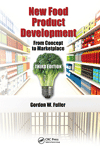Snack Food & Wholesale Bakery was recently able to talk to Dr. James "Jimi" Crawford, founder and CEO of Orbital Insight, Palo Alto, CA, about how the COVID-19 pandemic has affected the potato chip industry.
Liz Parker: How has the COVID-19 pandemic disrupted the potato chip supply chain, including product focus and worker shifts?
James Crawford: In times of uncertainty and crisis, many people turn to comfort foods, whether they be nostalgic treats from childhood or something that provides a satisfying crunch. During the pandemic, consumers have also stocked up on cheaper staples that have a long shelf life. As a result, COVID-19 has boosted Americans’ snack consumption: sales of Frito-Lay’s are up 30 percent, and polls show 42 percent of people are eating more snack foods since the pandemic began.
Changing consumer demands and state regulations correlate with changing production lines for our favorite snacks. Orbital Insight monitors how factories respond to changes in supply chains through geospatial analytics such as anonymous mobile location data.
For example, when Frito-Lay’s Modesto plant workers displayed COVID symptoms, Orbital Insight detected three days of downtime in March. Unlike meat processing plants, the major US potato chip manufacturers have generally remained open and even ramped up their shifts to meet consumer demand, increasing workers by 20 percent during the height of stockpiling in March and April. Certain factories such as Frito-Lay’s Williamsport, PA plant have seen higher surges in activity throughout May and June, which could indicate a change in assembly lines as many manufacturers move to narrow their product and marketing lines to bestsellers.
LP: How have factories been adjusting their workforce to meet comfort food demand during the pandemic?
JC: Andy Callahan, the CEO of Hostess Brands, highlighted that plant and worker safety have been key to the company’s ability to meet rising demand for comfort foods—adapting assembly lines to accommodate continuous social distancing, facial coverings, and temperature checks. Its Emporia, KS plant had four reported COVID cases in April versus 95 in a nearby Tyson plant. Orbital Insight data indicates that the plant is currently operating at workforce levels 20 percent higher than pre-COVID levels.
Nabisco has been simultaneously coping with supply chain complexities from COVID and concluding a four-year union battle over pension and outsourcing concerns. In the Nabisco Portland Bakery, plant levels dipped down to 60 percent of pre-COVID levels at some points of the pandemic due to an unofficial strike and COVID-related absenteeism. The company has begun to use non-union labor and announced a plan to hire 1,000 new workers to keep up with the rising demand. Orbital Insight saw significant growth in plant activity at Nabisco’s Chicago and Fair Lawn, NJ bakeries following the Memorial Day Weekend.
LP: Have any factory or manufacturer “best practices” changed during the pandemic?
Factories and manufacturers have had to be nimble during the pandemic to adjust to the rapid shifts in consumer demand. Food brands have refocused their efforts into producing their most popular items at a quicker rate and have slowed down or put a halt to less crucial or popular items. For example, Frito-Lay paused production entirely of the Tostitos Multigrain Scoops while Oreo is prioritizing regular Oreo cookies, Oreo Thins and fudge-covered Oreos due to their popularity.
Lamb-Weston is converting its assembly lines to manufacture frozen potato products for retail sales. Over 50 percent of the company’s revenues usually come from QSR, which have been severely impacted by COVID. While Orbital Insight observed a significant decline in activity at Lamb-Weston factories during April, it saw a rebound in May—potentially related to conversion to retail-focused assembly lines.
Most importantly, manufacturers are realizing they need deeper supply chain visibility, monitoring the potential bottlenecks and arranging alternative procurement sources as trouble arises. Years of JIT-based supply chain optimization has created systemic risk. The new set of best practices during COVID and beyond will focus on simplifying product lines, diversifying suppliers and continuously monitoring upstream and downstream risk.











